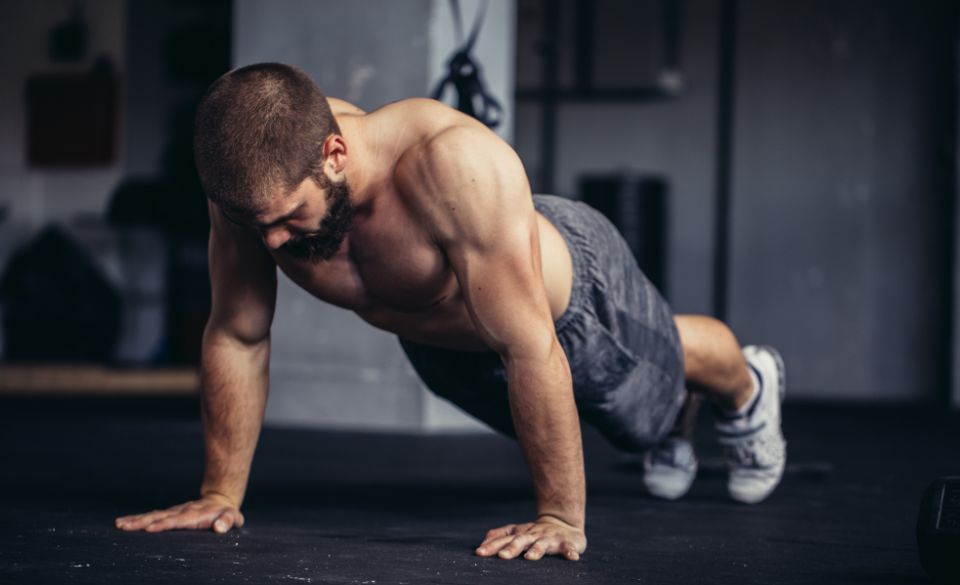
Top 10 Resistance Exercises You Should Know
Page Contents
Are you looking to add some variety to your workout routine and challenge your muscles in new ways? Look no further than resistance exercises! Resistance exercises use resistance bands, weights, or even just your own bodyweight to create resistance and help build strength and tone in your muscles. In this blog post, we will discuss what resistance exercises are, the benefits they provide, and the top 10 resistance exercises you should know.
What Are Resistance Exercises?
Resistance exercises are a type of strength training that involve creating resistance against your muscles, which causes them to contract and get stronger. This can be done in a variety of ways, including using weights, resistance bands, or your own bodyweight. Resistance exercises can be performed for any muscle group, making them a versatile and effective way to build overall strength and tone.
Benefits of Resistance Exercises
Resistance exercises, also known as strength training or weightlifting, have numerous benefits for overall health and wellness. In this section, we will discuss some of the most notable benefits and support them with relevant studies.
Builds Muscle Mass and Strength
Resistance exercises have long been associated with building muscle mass and strength. This type of exercise helps to stimulate muscle fibers, leading to muscle growth and an increase in strength. Studies have shown that regular resistance exercise can significantly increase muscle strength and size, even in older adults (1).
Promotes Weight Loss
Resistance exercises can also aid in weight loss by increasing muscle mass and metabolism. Muscle tissue burns more calories at rest than fat tissue, so the more muscle you have, the more calories you will burn throughout the day. In fact, one study found that resistance training increased resting metabolic rate by 7% and reduced fat mass by 1.8 kg over a 12-week period (2).
Improves Bone Density
As we age, our bones can become weaker and more prone to fracture. Resistance exercises can help to improve bone density, which can reduce the risk of osteoporosis and fractures. A study involving postmenopausal women found that resistance training increased bone density in the spine and hip (3).
Reduces the Risk of Chronic Disease
Regular resistance exercise has been shown to have a positive impact on a variety of chronic diseases, including type 2 diabetes, heart disease, and high blood pressure. One study found that resistance training improved insulin sensitivity and blood sugar control in people with type 2 diabetes (4).
Improves Mental Health
Resistance exercises not only benefit physical health, but also mental health. One study found that resistance training reduced symptoms of depression in older adults (5). Resistance exercise has also been shown to improve self-esteem and self-confidence (6).
Overall, resistance exercises provide numerous benefits for overall health and wellness. Incorporating these exercises into your workout routine can help to build muscle mass and strength, promote weight loss, improve bone density, reduce the risk of chronic disease, and improve mental health.
Top 10 Resistance Exercises – You Should Know
1. Squats: Squats are a classic resistance exercise that target your quads, glutes, and hamstrings. Stand with your feet shoulder-width apart, then bend your knees and lower your body as if you’re sitting in a chair. Push back up to standing and repeat.
2. Lunges: Lunges are another great resistance exercise that target your quads, glutes, and hamstrings. Stand with your feet hip-width apart, then take a large step forward with one foot and lower your body until your front knee is bent at a 90-degree angle. Return to standing and repeat on the other side.
3. Deadlifts: Deadlifts target your hamstrings, glutes, and lower back. Stand with your feet hip-width apart, holding a weight in each hand. Hinge forward at your hips, keeping your back straight, then stand back up.
4. Push-ups: Push-ups are a classic resistance exercise that target your chest, shoulders, and triceps. Start in a plank position with your hands shoulder-width apart, then lower your body until your chest touches the ground. Push back up to plank position and repeat.
5. Pull-ups: Pull-ups are a challenging resistance exercise that target your back, shoulders, and biceps. Grip a bar with your hands shoulder-width apart and pull yourself up until your chin is above the bar. Lower back down and repeat.
6. Bench press: Bench press is a popular resistance exercise that targets your chest, shoulders, and triceps. Lie on a bench with a weight in each hand, then lower the weights down to your chest and press them back up.
7. Bicep curls: Bicep curls target your biceps. Stand with your feet shoulder-width apart, holding a weight in each hand. Bend your elbows and lift the weights towards your shoulders, then lower them back down.
8. Tricep extensions: Tricep extensions target your triceps. Stand with your feet shoulder-width apart, holding a weight in one hand. Raise the weight above your head, then bend your elbow and lower the weight behind your head. Straighten your arm back up and repeat.
9. Shoulder press: Shoulder press targets your shoulders. Stand with your feet shoulder-width apart, holding a weight in each hand at shoulder height. Press the weights up above your head, then lower them back down to shoulder height.
10. Plank rows: Plank rows target your back, shoulders, and core. Start in a plank position with a weight in each hand. Pull one weight up towards your chest, keeping your elbow close to your body, then lower it back down and repeat on the other side.
Final Words
Incorporating resistance exercises into your workout routine is a great way to build strength, tone your muscles, and improve overall health. The top 10 resistance exercises we’ve listed are just a starting point – there are endless variations and ways to challenge your muscles. Remember to always start with proper form and gradually increase the weight or resistance as you become stronger. With consistency and dedication, you’ll be amazed at the progress you can make with resistance exercises.
References:
1. Westcott, W. L. (2012). Resistance training is medicine: effects of strength training on health. Current sports medicine reports, 11(4), 209-216.
2. American Council on Exercise. (n.d.). Strength Training 101. Retrieved from https://www.acefitness.org/education-and-resources/lifestyle/blog/3542/strength-training-101/
3. Schoenfeld, B. J., Peterson, M. D., Ogborn, D., Contreras, B., & Sonmez, G. T. (2015). Effects of low- vs. high-load resistance training on muscle strength and hypertrophy in well-trained men. Journal of strength and conditioning research, 29(10), 2954-2963.
4. Pucci, G. C., Rech, C. R., Fermino, R. C., & Reis, R. S. (2012). Association between physical activity and quality of life in adults. Revista de saude publica, 46(1), 166-179.
5. Dias, M. R., Simão, R. F., Saavedra, F. J., Ratamess, N. A., & Novaes, J. S. (2010). Influence of strength training variables on strength gains in adults over 55 years-old: a meta-analysis of dose-response relationships. Journal of strength and conditioning research, 24(11), 3265-3274.


